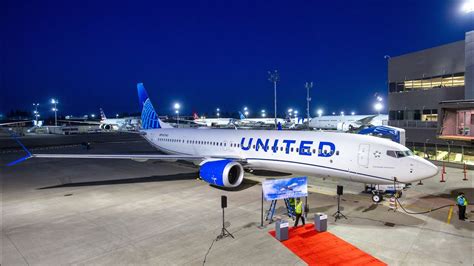 Industry observers have been pondering a follow on to the 757 for years. The 757, even today, provides unique capabilities. For example, its range is outstanding. The 757, designed to handle coast to coast flights in the US, ended up being used on long thin routes across the North Atlantic. This enabled the 757 to perform an important task – low risk long range route development.
Industry observers have been pondering a follow on to the 757 for years. The 757, even today, provides unique capabilities. For example, its range is outstanding. The 757, designed to handle coast to coast flights in the US, ended up being used on long thin routes across the North Atlantic. This enabled the 757 to perform an important task – low risk long range route development.
The 757 remains compelling because nothing has come along to replicate its capabilities. Which is why mention of the 757 attracts ongoing trade attention. The 737-900 and A321 don’t have the range payload capabilities of the 757 – close but not as good. For most airlines this is acceptable, because the 757 has special capabilities that are rarely taken to the edge.
The last 757 was delivered in 2005. The US-based fleet averages 19 years old. We mention the US a lot when discussing the 757, because its almost as if the aircraft was tailor-made for US service. Indeed, look the next chart and note how active 757s are concentrated in the US. As of 1Q14, 70.5% of all 757s in service were US-based.
We suspect the reason is that the 757’s range has less impact for most non-US airlines, barring a few like Air Astana. Older 757s retired from passenger service often find a second life at UPS or FedEx. These two airlines now have 175 757s between them, which equates to one in six (18%) of the active fleet. (DHL also has a good sized 757 fleet) Any focus on a 757 replacement will focus, in our view, on the requirements of US-based airlines.
During the recent Innovation Days event at Airbus we had the opportunity to speak with a senior Airbus manager about this very issue. Why, we asked, is there no replacement for the 757? The reply was illuminating. The 757s pushed to near maximum performance are those used over the North Atlantic. This fleet probably amounts to fewer than 50 aircraft. Airbus believes its A321 with sharklets accommodates most of a 757 operator’s needs. (American Airlines finds the A321 range trying, but then as a big 757 operator they have been spoiled) The A321neo should do even better. So, as far Airbus is concerned, there is no pressure to develop something that closely matches the 757’s capabilities.
Back to the Bloomberg story linked above. If Boeing is quietly developing a 757 replacement the nonchalant view in Toulouse will have to change rapidly.
Views: 0





I wonder what a new engine would offer as far as fuel burn savings. The 737 has been upgraded several times and that frame had its start in the 60’s, whereas the 757 was born in 1982, so it may warrant a make over and even though the tooling is gone, it would not be a deterrent to relaunching a 757MAX or what ever the designation would be.
There is nothing out there now or in the near future that can fill the role of the 757. Long range,enough for east coast to Europe flights, very good short field performance, and able to serve hot and high airports.
If both the 200 and 300 series were offered, it seems it might be more attractive to some airlines instead of just one model. Just my 2 cents worth.
Airbus’s best bet is to announce a Re-Engined+Carbonized Lighter weight A300/A310 NEO aircraft which will come in two configurations :
1.Super dense (9 abreast coach,~275-300 Pax) and with a max range of about 3000 NM largely fore the supposed chinese demand and
2.Standard config (8 abreast coach, 220-250 pax) with a trans-atlantic range of about 3500-4000 NM largely for the take up the 757 replacement demand , ideally equipped with removeable ACTs to extend range as required up to 5000 NM
This will help Airbus by
1. Killing demand for the 757 and taking a majority of the replacement orders
2. Have time to evaluate any further demand for an A330 NEO and announce it if necessary at a later date along with using the added improvements of the A300NEO in it.
3. This would be the next logical power class for the PW Pure Power Series. Thus both RR and PW would be more than happy to Re-Engine the plane with a ~4 year timeline to EIS.
4. Will directly compete with the 757/767/787 families
B757 is a great plane, I doubt B will not let it go easily like this to A. I am sure B is cooking something to replace it on time.
Very often people think that the 757 replacement must be a 757 like aircraft. I do not think it is necessarily the correct way to think about it.
I am just wondering whether a 767-2C derivative can be a good replacement for the bigger 757, because the smaller 757 has been replaced by narrowbody aircraft like the 737-900ER or A321.
It may sound stupid, but a 767-8 (767-2C based) and 767-9 (-300 based) with a GEnx-2B-ish engine would no be too bad for regional routes and for airlines that do not need high utilization rate (thin routes).
The only thing is that the GEnx-2B is about 2,500 lb heavier than the CF6-80C2, otherwise in term of dimensions and takeoff thrust both are very similar. The GEnx-2B is about 13% more efficient that the CF6-80C2.
At 220 to 300 Pax, it would be too large for thin routes. The 180 to 220 Pax range is what gave the 757 its appeal on long thin routes. Its just the fuel burn that hurts it today, but with new engines and some weight loss and cleaning up the aerodynamics, it could sell fairly well, not in the numbers of the other narrow bodies, but enough to fill a void that exists today.
I thought about that also, but the short field performance of the 767 is no where near the 757 is and that is a valid selling point.
It was discussed on a different site with the point being made that the 767 was a significantly larger (heavier) plane, can’t remember the numbers. As Steve points out above it also sits above the 757 in passenger numbers.
Whilst there is a market for the 757, is it only 50 as seems to be the common number stated, or significantly more ?
I find it hard to believe that Boeing, with the current management, would commit to a 757 max / replacement anytime soon.
I believe Boeing is quietly designing a modular narrow-body lithium aluminum bodied replacement for both the 37 and 57. It will be more a more electric aircraft but not as much as the 87. Hopefully a slight increase in width will be considered to combat Airbus’s wider interior cabin experience of their 20 series. (11’6″)